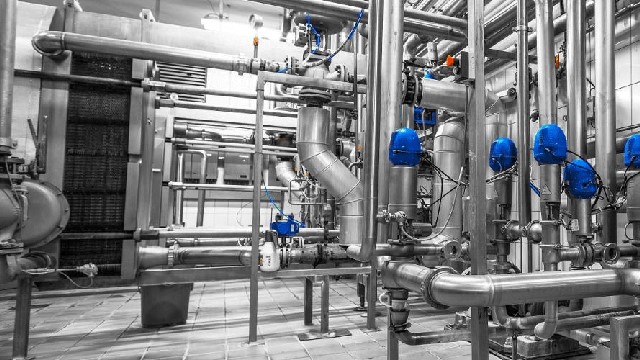2020-09-23 Product news
Green washing for food production that saves water
Conservation procedures can both cut down on water used for cleaning and recover some of it for reuse.
This article is related to Alfa Laval's food grade equipment. Alfa Laval's Heat Transfer, Separation and Hygienic Fluid Handling products are used by brewers, pharmaceutic and food manufacturers in Canada.
Read the full article on foodprocessing.com
“…Cleaning and sanitizing is, in almost all food and beverage plants, the operation that uses the most water… …But the more water a plant uses, the greater the strain on local resources, both to supply it and to accommodate it when it becomes wastewater.
The stakes can be high, especially when a plant comes online or its water requirements suddenly rise. That’s what Kraft Heinz found when, in 2017, it started making string cheese in its facility in Lowville, N.Y., about 60 miles northeast of Syracuse.
The plant had been producing cream cheese, but the cleanup required after making string cheese was harder and more water-intensive. The plant’s water use shot up, to the point where it took up more than 80% of the town’s typical daily water supply. At one point in 2017, Lowville had to tell its approximately 3,500 residents to restrict car washing and other water usage…
…Meaningful water reduction is often a matter of small victories – finding incremental savings in disparate places that add up.
• Sprayers that apply cleaning chemicals directly to equipment like fillers can cut down on the amount of water used to clean them.
• Proper preparation of the area to be cleaned. Brooms, squeegees, catch pans and even pressurized air can remove loose soil from a surface effectively without water.
• Proper use of cleaning chemicals. Too little means cleaning won’t be done effectively; too much can require extra rinsing to remove the chemical and its foam, as well as wasting the chemical in the first place.
• Chemical quantities for each major task should be predetermined; in plants that require frequent use, automatic dispensing should be considered. (This not only standardizes chemical use, but, by tracking usage, can provide a crude metric as to the speed and effectiveness of cleaning.)
• Use of water-saving equipment and chemicals. Certain kinds of sprayers, valves, etc., have the potential to save water while maintaining effective cleaning.
• Spray nozzles and other equipment with low flow and high impingement can do this, as can dry steam cleaning for things like conveyor belts…
• Alcohol-based chemicals can sanitize surfaces without water.
• Pumps that can run at varying speeds are better suited to handle the surges and ebbs required by sanitation.
• More efficient clean-in-place (CIP) systems. These need to be monitored by programmers and controls personnel to make sure that rinses are effective without being excessive. Instrumentation like flowmeters and conductivity sensors, which determine that chemicals are at proper strength, can help fine-tune CIP for maximum efficiency. In CIP operations that begin with a prewash to loosen soil, water for the final, sanitizing stage of one cycle can be used for the prewash of the next.
Dirtier water
When reducing the amount of water used for cleaning, plant managers must be aware of a potential unintended consequence: dirtier wastewater. The volume of water will be reduced but the overall count of soil and cleaning chemicals will stay about the same, increasing the water’s degree of contamination. This might require more intense treatment before discharge to avoid triggering fines over releasing wastewater with excessive chemical oxygen demand, suspended solids or other pollution metrics...
Read more of the article on foodprocessing.com
Tags
All
Meet our Expert
 +1 888 253 2226
+1 888 253 2226
Evan Knight, B.A.Sc., P.Eng., Ext. 321
Hygienic Applications
Email Evan
- Cost savings (water, chemicals): 70%*
- Time saving = more production time: 60%*
*compared with traditional static spray ball cleaning
